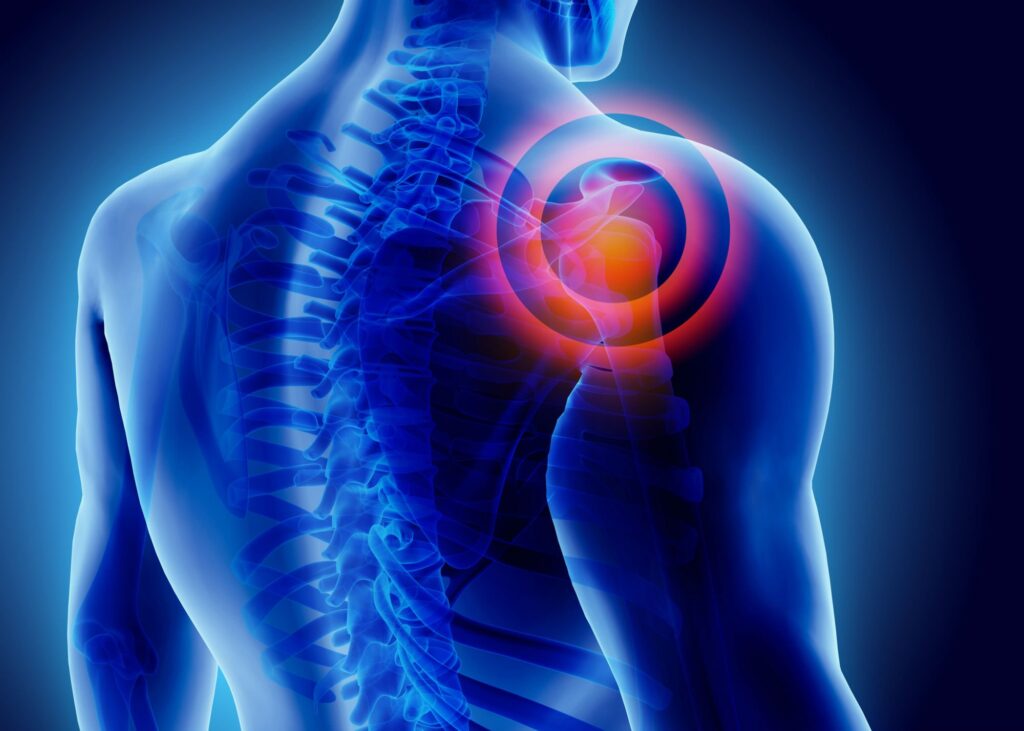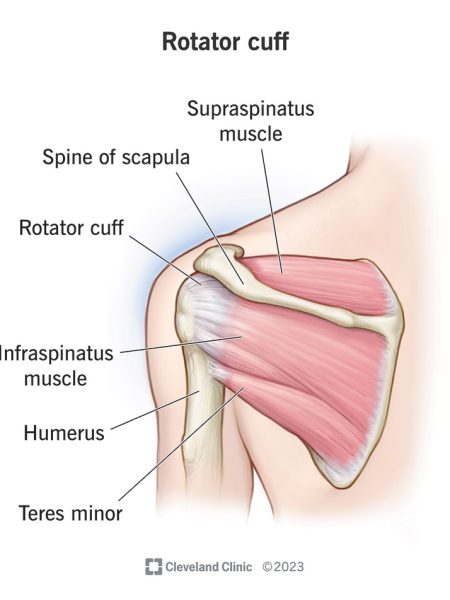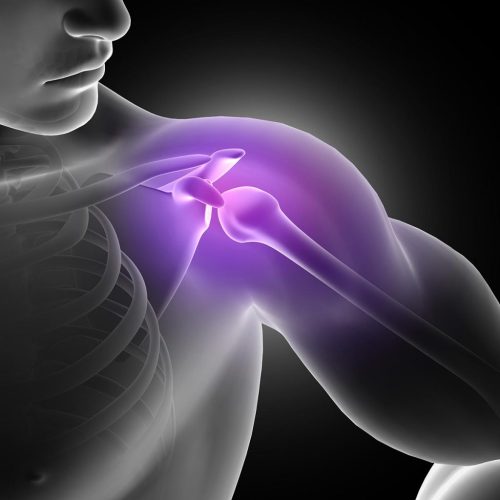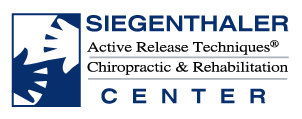Shoulder Pain
Frozen Shoulder

(wikipedia)
Frozen shoulder, medically referred to as adhesive capsulitis, is a disorder in which the shoulder capsule, the connective tissue surrounding the glenohumeral joint of the shoulder, becomes inflamed and stiff, greatly restricting motion and causing chronic pain.
Adhesive capsulitis is a painful and disabling condition that often causes great frustration for patients and caregivers due to slow recovery. Movement of the shoulder is severely restricted. Pain is usually constant, worse at night, and when the weather is colder; and along with the restricted movement can make even small tasks impossible. Certain movements or bumps can cause sudden onset of tremendous pain and cramping that can last several minutes. This condition, for which an exact cause is unknown, can last from five months to three years or more and is thought in some cases to be caused by injury or trauma to the area. It is believed that it may have an autoimmune component, with the body attacking healthy tissue in the capsule. There is also a lack of fluid in the joint, further restricting movement.
In addition to difficulty with everyday tasks, people who suffer from adhesive capsulitis usually experience problems sleeping for extended periods due to pain that is worse at night and restricted movement/positions. The condition also can lead to depression, pain, and problems in the neck and back. Risk factors for frozen shoulder include diabetes, stroke, accidents, lung disease, connective tissue disorders, thyroid disease and heart disease. The condition very rarely appears in people under 40.
Causes & Treatment
Frozen shoulder can be quite frustrating to both the patient and Doctors. There are some things that a patient can do to accelerate resolution. In most cases some dysfunction is commonly caused by the subscapularis not doing its job effectively, and resultant compensation by surrounding anatomy.
Through Active Release Techniques, Graston and sometimes manipulation, our objective is to correct the biomechanics of the shoulder joint. This is commonly accomplised by restoring proper function to the subscapularis. The subscapularis works to keep the humeral head back and down (posterior and inferior) in the ball and socket joint of the shoulder. When there is damage and dysfunction of the subscapularis, the humeral head goes up and forward(superior and anterior), this leads to impingement of the supraspinatis tendon as the arm is raised. This is followed by a flexibility and strength and stabilization program.
Related Articles:

Rotator Cuff

The rotator cuff is a group of four muscles and their tendons that act to stabilize the shoulder.
(wikipedia)
The rotator cuff muscles are important in shoulder movements and in maintaining glenohumeral joint (shoulder joint) stability.[2] These muscles arise from the scapula and connect to the head of the humerus, forming a cuff at the shoulder joint. They hold the head of the humerus in the small and shallow glenoid fossa of the scapula. The glenohumeral joint has been analogously described as a golf ball (head of the humerus) sitting on a golf tee (glenoid fossa).[3]
During abduction of the arm, moving it outward and away from the trunk, the rotator cuff compresses the glenohumeral joint, a term known as concavity compression, in order to allow the large deltoid muscle to further elevate the arm. In other words, without the rotator cuff, the humeral head would ride up partially out of the glenoid fossa, lessening the efficiency of the deltoid muscle. The anterior and posterior directions of the glenoid fossa are more susceptible to shear force perturbations as the glenoid fossa is not as deep relative to the superior and inferior directions. The rotator cuff’s contributions to concavity compression and stability vary according to their stiffness and the direction of the force they apply upon the joint.
Causes & Treatment
Rotator cuff pain and dysfunction is commonly caused by the subscapularis not doing its job effectively, and resultant compensation by surrounding anatomy. Through Active Release Techniques, Graston and sometimes manipulation, our objective is to correct the biomechanics of the shoulder joint. This is commonly accomplised by restoring proper function to the subscapularis. The subscapularis works to keep the humeral head back and down (posterior and inferior) in the ball and socket joint of the shoulder. When there is damage and dysfunction of the subscapularis, the humeral head goes up and forward (superior and anterior), this leads to impingement of the supraspinatis tendon as the arm is raised.
This is followed by a flexibility and strength and stabilization program.
Related Articles:


